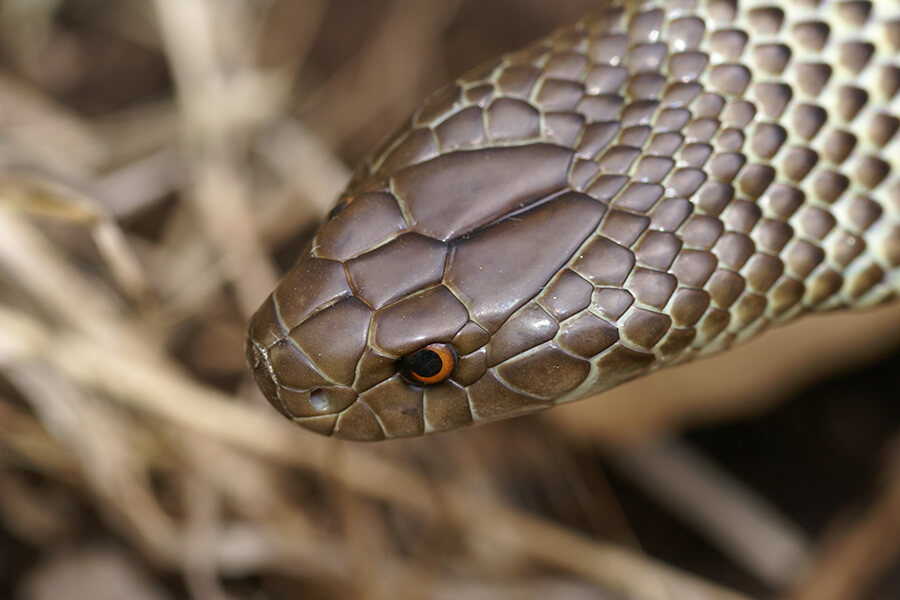Introduction

When it comes to the fascinating world of snakes, couple of types record the imagination rather like the baby tiger snake. Known for their distinct coloration and potent poison, these serpents are an indispensable part of Australia's unique community. In this thorough write-up, we will explore numerous aspects of baby tiger snakes, including their actions, habitat, and just how to securely engage with them. Whether you're a wild animals enthusiast or just interested concerning these creatures, comprehending baby tiger serpents can assist foster a deeper admiration for nature.
Baby Tiger Snakes: What You Required to Understand About Their Habits and Habitat
What Are Child Tiger Snakes?
Baby tiger serpents are juvenile types of the highly poisonous varieties known clinically as Notechis scutatus These serpents are primarily located in seaside areas of Australia, specifically in Tasmania and southern Victoria. As they grow, their pigmentation changes from a much more muted combination to the particular yellow and black bands that provide their name.
One notable element of baby tiger snakes is their dimension; hatchlings commonly measure around 25-30 centimeters in size. Regardless of their tiny stature, they have an unexpected quantity of venom that can be harmful to humans if bitten.
Physical Characteristics
Tiger serpents have several vital physical attributes:
- Coloration: The distinct banding pattern frequently becomes extra noticable as they mature. Size: Grownups can reach sizes of as much as 2 meters. Body Shape: They have a durable body that helps in swimming and earthbound movement.
Where Do Infant Tiger Snakes Live? Comprehending Their Habitat
Understanding the habitat preferences of child tiger serpents is important for both conservation efforts and public safety. These serpents flourish in different settings:
- Wetlands: Marshes and swamps provide sufficient searching grounds. Coastal Regions: Often located near beaches where they can search for prey. Woodlands: Thick plants provides cover from predators.
Geographical Distribution
Tiger serpents are predominantly located along Australia's southern shoreline, including:

- Tasmania: Home to one of one of the most well-known populations. Victoria: Specifically in areas near water bodies.
Are Tiger Snakes Venomous? A Deep Study Their Venom
One usual inquiry arises when discussing child tiger snakes: "Are tiger snakes poisonous?" The response is a definite yes!
Venom Composition
The venom of tiger snakes has neurotoxins that can trigger paralysis, coagulopathy (blood clot problems), and possibly fatality if untreated. Below's what you require to understand:
- Effects on Humans: An attack from a tiger serpent can bring about symptoms like swelling, discomfort at the bite website, nausea or vomiting, and also breathing failure.
Comparison with Various other Poisonous Snakes
In contrast to various other Australian snakes such as the Australian snake distribution eastern brown serpent or king brownish snake, tiger serpent poison is considered amongst the most powerful. Nevertheless, casualties are uncommon because of improved clinical therapies and accessibility to antivenom.
Behavioral Patterns of Baby Tiger Snakes
Understanding how baby tiger snakes behave is essential for those who reside in or check out locations where these reptiles are prevalent.
Nocturnal Habits
Most child tiger snakes exhibit nocturnal habits. They often tend to forage for food during cooler night temperature levels. This flexibility assists them stay clear of killers while improving their searching efficiency.
Hunting Techniques
Their hunting strategies include:
- Ambush Predation: Waiting inactive until target comes close. Active Foraging: Actively moving via greenery or along waterways in search of food.
First Help for Snake Bites: What You Should Know
Despite being remarkable animals, encounters with infant tiger snakes can lead to dangerous situations if bites occur. Knowing first aid treatments can conserve lives.
Immediate Tips After a Bite
Remain calm; panic boosts heart rate. Immobilize the impacted arm or leg utilizing a splint or bandage. Seek prompt clinical interest-- antivenom might be necessary.Creating a Serpent Bite Emergency Treatment Kit
A well-prepared emergency treatment set ought to include:
|Product|Function|| ------------------------------|--------------------------------------|| Compression plaster|To debilitate the arm or leg|| Splint|Maintains damaged bones or joints|| Antihistamines|Relieves allergies|| Emergency call numbers|Quick gain access to throughout get more info emergency situations|
Common Misconceptions Concerning Tiger Snakes Debunked
Many misconceptions border these appealing reptiles; let's clarify some misconceptions commonly held by people.
Myth # 1: All Tiger Snakes Are Aggressive
While some people may display protective behaviors when intimidated, not all tiger snakes display aggression towards people unless provoked.

Myth # 2: Child Tiger Snakes Are Much Less Harmful Than Adults
This misconception can not be better from the truth! Child tiger serpents contain virtually as much poison as grownups relative to their size; therefore they posture substantial risks if bitten.
FAQs About Child Tiger Snakes
What do infant tiger snakes eat?- They primarily eat small creatures, birds, frogs, and fish.
- Look for slender bodies with pale banding patterns that end up being much more pronounced as they mature.
- Yes! Birds of target and larger reptiles may target them.
- Typically every few weeks as they proliferate throughout their very early life stages.
- While some individuals do maintain them unlawfully without permits due to their harmful nature; it's typically not suggested given their poisonous status.
- With punctual clinical treatment-- consisting of antivenom-- the survival rate is high!
Conclusion
In recap, understanding child tiger snakes-- what they consume, where they live, how they act-- can furnish us with valuable knowledge concerning these amazing yet dangerous animals. The relevance of education and learning surrounding emergency treatment steps can not be overemphasized; knowing how to react effectively after a bite could save lives while fostering regard for our wriggling next-door neighbors within Australia's rich biodiversity range.
By appreciating these snakes' duties within communities-- and recognizing potential hazards-- we advertise conjunction rather than fear-based responses toward each other's presence in nature's grand tapestry! Whether you're a devoted hiker contemplating your next adventure or simply curious about neighborhood wildlife experiences near home-- this guide acts as your trusted reference factor on the enigmatic globe occupied by our good friends-- the splendid baby tiger snake!